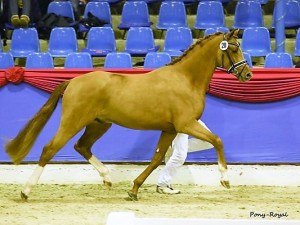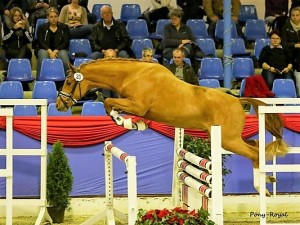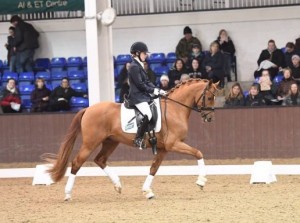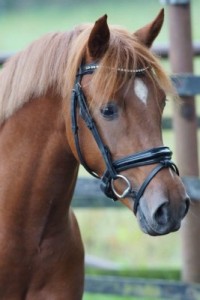




Is it safe to be seen in public? – Is it cool to be safe?: looking at some riders you would think the answer was “No”! How can that be; it’s a completely dotty way to approach your own safety, the wellbeing of your horse and the lives and safety of other road users. A half ton of horse on top of a smart car does not make for a happy outcome; whoever is at fault. It’s the least you can do to let Drivers know you are there and that you are riding an animal which could react adversely in a stressful situation.
HRSA has some good advice about road safety and horses and they point out that there appears to be a great deal of confusion surrounding the issue of the tabards which state ‘caution young horse’.
If you wear a tabard with a message on it there are a number of factors to consider in relation to whether or not you are admitting liability in the event of an accident.
Wearing a tabard in itself it is not an admission of liability.
Whether or not a rider wearing a tabard with ‘caution young horse’ is found liable for an accident will depend on the accident circumstances.
Each case will be assessed on the evidence at hand.
In order to be liable for an accident there must be negligence on the part of the rider and wearing a tabard with the words ‘caution young horse’ is not in itself grounds for a successful claim in negligence.
If you look at various scenarios in which wearing a tabard might be worn its is easy to think of a situation in which a horse and rider were proceeding correctly along a country lane and a vehicle suddenly and without warning veered in to their path causing injury.
The rider will not be held liable on the basis that they were wearing a tabard stating ‘caution young horse’.
Likewise if a horse and rider were correctly proceeding down a country lane towards a bend and a car, travelling in the same direction, came past too close and too quickly whilst sounding its horn to warn oncoming drivers that it was coming around the bend and the horse spooked the rider would not necessarily be held as negligent merely because he/she was warning others that they were riding an inexperienced horse.
In the second example it could be argued on behalf of the rider (whether on a young horse or not) that the driver was negligent in that he/she failed to pass wide and slow, failed to wait until it was safe to pass and failed to appreciate that horses are unpredictable (despite the best efforts of the rider) when he/she sounded the horn. It would be argued that the driver was negligent and that as a result of said negligence the rider/horse sustained injury.
In such a situation council would go on to argue that the fact that the rider was wearing a tabard with the wording ‘caution young horse’ means that the driver should have taken even greater care to not spook the animal. It would be argued that the reasonable driver, especially on seeing the writing on the rider’s tabard, should not have sounded his/her horn. Rather he/she would have waited until the horse had proceeded around the bend before passing wide and slow.
The difficulty and I suspect the confusion surrounding this comes from the fact that in many instances the Defendant may well attempt to use the fact that the rider was on a young horse to his/her own advantage. The Defence could attempt to play on the fact that the rider was on an inexperienced horse. If there are no independent witnesses and the third party driver says that the horse in fact jumped into the middle of the road despite him/her attempting to pass considerately, striking his/her vehicle the court might be more inclined to believe that an inexperienced horse would be more prone to such behaviour.
If a rider failed to wear a tabard warning drivers that the horse that they were riding was inexperienced and this later came out in the course of proceedings this too could be used against the rider. The argument could be that the rider failed to warn other road users that there was an increased risk of the horse spooking.
Unlike in criminal, law the burden of proof for civil proceedings is that, on the balance of probabilities (i.e more than 50%) your account of the accident circumstances is correct.
In summary each case will turn on its own evidence and wearing a tabard which reads ‘caution young horse’ does not automatically make the rider liable in the event of an accident.
If you are involved in a road traffic accident whilst riding your horse it is vital that you instruct a solicitor who is a specialist in dealing with equine accident claims. The lawyer will need to collate all of the evidence and prepare your case based on the facts. In some instances a collision investigator might need to be instructed to prepare a report to assist with liability. In such instances the accident location will be attended, the damage to horse and rider assessed and speed of the 3rd party calculated etc
However, wearing a fluorescent vest whilst out hacking on roads is vital and should always been worn for your own safety. I don’t know how many times I have seen riders wearing their expensive Ariat or Toggi outfits become totally camouflaged in the shadow of a leafy overhanging tree on a country lane. I cant stress how dangerous it is (as a driver) if you cannot see a rider and his horse. You would never see a runner or a cyclist who is not aware of the necessity of being seen in good time by drivers. For some reason being safe is so often seen as uncool by the riding community, but its less cool to end up splatted on the road and causing hurt or damage to others or your horse.









